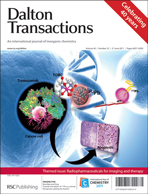The synthesis of chelators that form high stability complexes with copper(II) isotopes and do not suffer from transchelation in vivo has been a goal for many chemists. Such chelators will facilitate the exploitation of the 64Cu isotope (t1/2 = 12.7 h, β+ (19%); β− (39%); EC (41%)) for positron emission tomography imaging studies, which has a longer half life relative to the more commonly used 18F (t1/2 = 109.8 min) and 11C (t1/2 = 20.4 min) isotopes. One option is the CBTE2A chelator, which has been championed by Weisman, Wong and Anderson, and, more recently, alternate bifunctional chelator (BFC) versions have been synthesised. Improved synthetic methods are required for unsymmetric derivatisation of these chelators to allow more selective biomolecule attachment. This work investigates synthetic routes to form new unsymmetric chelating ligands via stepwise reaction of the bisaminal precursor, determines their X-ray structures and demonstrates cold copper(II) isotope complex formation.
You have access to this article
 Please wait while we load your content...
Something went wrong. Try again?
Please wait while we load your content...
Something went wrong. Try again?


 Please wait while we load your content...
Please wait while we load your content...